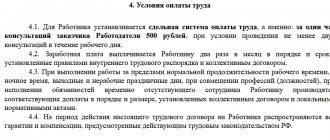Documentation of legal relations creates the basis for the legal conduct of activities. The conclusion of an agreement provides a guarantee of fulfillment of the terms of the transaction. The agreements are valid until the repayment of obligations is completed. These documents have legal force and are used by parties to relations in the event of disputes, as well as by regulatory and judicial authorities in the exercise of their functions. One of the most pressing questions that arises among enterprise managers is related to the storage of contracts. Let's take a closer look at it.
Typical periods
In practice, contracts can be stored for periods of:
- Limited date. When determining the period, the terms of additional agreements are taken into account.
- Not limited by date. The content of the agreement may contain, for example, wording such as “until full repayment of obligations.”
A separate category consists of documents of permanent storage. These include constituent papers, agreements on the acquisition of property, leases, etc.
Proper write-off and destruction
Write-off of enterprise contracts whose shelf life has expired is a complex procedure. First of all, an examination of the value of the securities is carried out. This way, particularly valuable documentation is highlighted and the shelf life of contracts in office work is accurately determined. Documents that fall under the laws on writing off contracts are also carefully selected. And papers that are no longer subject to storage are recorded in the Act of Allocation for Destruction.
Second phase
The next stage is packaging and transportation of documents for disposal. Recycling itself occurs through shredding or burning documents. Destruction of contracts can occur in the presence of representatives of your organization.
Logbook
Storage of contracts involves their registration in a special book. The legislation does not have clear requirements for the form of accounting. Enterprises independently develop log books. It must contain the following information:
- Number, date of compilation, name of the counterparty.
- Brief description of the document. As a rule, the type of agreement (supply, performance of work, etc.) is indicated.
- On the duration of validity and the final date if a fixed-term agreement is concluded.
The journal must contain information about contracts and appendices to them. Various services of the enterprise can control the maintenance of the accounting book. For example, this could be the legal department, accounting, etc.
Document retention periods
| Document type | Shelf life |
| Financing documents | |
| Documents (regulations, cards) on opening, closing, re-registration of settlement, current, correspondent, and relevant personal accounts | 5 years |
| Bank account agreements | 5 years after expiration of the contract |
| Credit agreements, loan agreements and other debt obligations; documents confirming the provision of a credit (loan) and the debtor’s fulfillment of his obligations | 5 years after full fulfillment of obligations |
| Accounting and reporting | |
| Accounting statements (balance sheets, profit and loss statements, reports on the intended use of funds, appendices to them, etc.): a) annual summary (consolidated); b) annual; c) quarterly; d) monthly | At least 10 years At least 10 years 5 years (in the absence of annual - at least 10 years) 1 year (in the absence of quarterly, annual - at least 10 years) |
| Accounting policy documents (working chart of accounts, forms of primary accounting documents, etc.) | 5 years |
| Accounting registers (general ledger, various order journals, account transaction journals, turnover sheets, inventory lists, etc.) | 5 years subject to inspection |
| Primary accounting documents and appendices to them, which recorded the fact of a business transaction and served as the basis for accounting entries | 5 years subject to inspection |
| Invoices | 4 years |
| Documents (certificates, acts, obligations, correspondence) on accounts receivable and payable | 5 years |
| Certificates of registration with tax authorities | At least 10 years |
| Documents (calculations, summaries, certificates, tables, information, correspondence) on accrued and transferred amounts of taxes to budgets of all levels, extra-budgetary funds, debts on them | 5 years |
| Documents (calculations, information, statements, decisions, lists, statements, correspondence) on tax exemption, provision of benefits, deferred payment or refusal of payment of taxes, excise duties and other duties | 5 years |
| Calculation statements for the deduction of insurance contributions to the social insurance fund: a) annual; b) quarterly | At least 10 years 5 years (in the absence of annual payments - at least 10 years, with an accrual total for the fourth quarter - constantly) |
| Tax returns for all types of taxes | 5 years |
| Customs declarations | 5 years subject to inspection |
| Declarations and calculations of advance payments for insurance contributions for compulsory pension insurance | 5 years (in the absence of personal accounts or payroll statements - 75 years) |
| Information on the income of individuals | 5 years (in the absence of personal accounts or payroll statements - 75 years) |
| Registers of information on the income of individuals | 75 years old |
| Books of accounting of income and expenses of organizations and individual entrepreneurs using the simplified tax system | At least 10 years |
| Documents (certificates, acts, obligations, correspondence) about shortages, embezzlement, theft | 5 years |
| Documents (acts, certificates, invoices) on the acceptance of work performed: a) under agreements, contracts, agreements for work related to the main activity; b) under employment contracts, work contracts c) under business, operational contracts, agreements | 5 years after the expiration of the agreement 5 years (in the absence of personal accounts - 75 years) 5 years after the expiration of the agreement |
| Personnel document flow | |
| Collective agreements | At least 10 years (sent for information - until the need has passed) |
| Time sheets (schedules), working time logs | 5 years (under difficult and dangerous working conditions - 75 years) |
| Bonus documents | 5 years |
| Staffing schedules and changes to them: a) at the place of development and/or approval; b) in other organizations | At least 10 years 3 years |
| Personal files: a) managers; b) workers | At least 10 years 75 years |
| Employment contracts (service contracts), employment agreements, work contracts that are not included in personal files | 75 years old |
| Personal cards of employees (including temporary ones) | 75 years old |
| Original personal documents (work books, diplomas, certificates, certificates) | On demand (unclaimed - 75 years) |
| Travel certificates | 5 years after returning from a business trip (for those sent to the Far North and equivalent areas - 75 years) |
| Documents (official assignments, reports, correspondence) on the secondment of workers | 5 years (for long-term foreign business trips - 10 years) |
| Documents (reports, acts, information) on the accounting of work books and inserts for them | 3 years |
| Vacation schedules | 1 year |
For the storage of primary documents confirming the implementation of expenses in the form of depreciation charges, a general period of four years is established, the calculation of which is carried out in a special manner - from the moment the depreciation calculation is completed in tax accounting (accounting for expenses for the acquisition of such property) ( letter of the Ministry of Finance dated 04.26.11 No. 03-03-06/1/270 ).
It is necessary to store accounting and tax statements and other documents of the company for another four years after liquidation (subclause
Grouping
Storage of contracts can be carried out in various ways. For example, agreements can be combined into groups, depending on the nature of legal relations with other parties to the transactions. Accordingly, the enterprise draws up several accounting journals in which agreements are recorded:
- With counterparties-suppliers or purchasers of goods. An enterprise can separately register permanent and one-time agreements.
- With entities providing services. Such documents are usually accompanied by additional agreements. Particular attention is paid to the procedure for storing contracts related to rental or utility services.
- Contract. Such contracts are used during construction.
- With employees.
Registration books perform a very important function. Each recorded agreement in the journal has its own number, through which the document can be quickly found in the database.
What is the essence of the document?
The list of standard management archival documents generated in the process of activities of state bodies, local governments and organizations has been updated. We are talking about documents generated in the process of activities of government agencies and companies in the implementation of the same type (common to all or most) management functions. For a number of documents, the retention period has been increased, and some documents will require a shorter retention period. The list includes, among other things, accounting, personnel, government procurement documents, contracts and much more.










